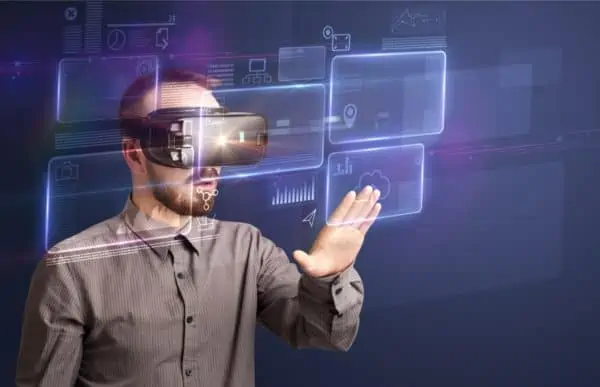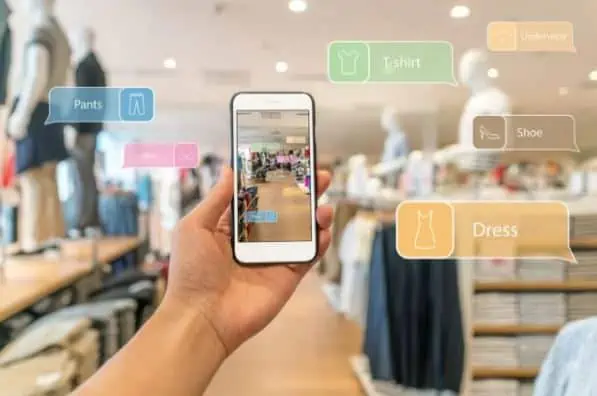
Virtual reality has arrived and is quickly gaining popularity, so it is no longer the stuff of science fiction. Virtual reality is growing steadily and is projected to reach a market size of more than USD 21 billion in 2021. Over the next ten years, it is forecast to develop at a compound annual growth rate of 15%. (2022 to 2030).
What is marketing in virtual reality?
The word “virtual reality marketing” (a marketing approach utilizing VR content) contains the solution to this query. When it comes to VR material, the options are practically limitless. You may choose from interactive 3D experiences to virtual tours once you put on a VR headset.
Your company can extend its marketing operations beyond TV, magazine, and billboard advertising by utilizing VR marketing. By using virtual reality, you can fully immerse users in the world you’ve built for your business while effectively showcasing your goods.
Compared to an advertisement in a glossy magazine, a 3D environment where people can view your products or services or interact with them would leave a much deeper impression on their memory.
VR’s use in marketing
Virtual reality is used in various industries for various purposes, each of which has its specifics. In general, we can say that VR improves the emotional effect on the audience and helps get the message across.
VR marketing in real estate
Real estate objects are difficult to market since they are stationary.
A house or an apartment is always in the same area. Therefore, you must physically go there to see it. But what if we use “virtually” instead of “physically”?
A real estate company has access to far greater marketing prospects with virtual tours than traditional marketing through TV and print. Any TV commercial can convey to viewers the sense of comfort and space that VR can.
Additionally, by using VR marketing, you may also reach the low-mobility demographic, which for whatever reason, finds it challenging to travel for sightseeing. Not to mention the time you and your customers can save by allowing them to view VR real estate tours whenever convenient.
Of course, many of your consumers will still want to see the property they have their minds set on in person.
At the same time, virtual tours of the locations will enable them to eliminate any unquestionably inappropriate homes. Once more, both the real estate company and the clients save time and money.
Additionally, VR marketing is a fantastic tool for promoting unfinished properties. Customers cannot be invited to a construction site since it is unsafe and there is little to interest them. Unless, of course, you utilize VR.
Metricon, an Australian homebuilding company, uses VR marketing extensively to promote residences still being built. You can stroll through a fully equipped house that is displayed in their VR app.
You can evaluate the practicality and design and make adjustments early, which will lower the cost and length of time needed to finish the house.
VR marketing in retail
The retail industry quickly adopts cutting-edge technologies to sell its goods and services to avoid losing market share to e-commerce.
For a while now, retailers that sell furniture, vehicles, clothing, home goods, and accessories have been experimenting with VR technology by offering virtual installations, test drives, and try-on.
It appears that the moment has arrived for a widespread retail VR experience. The venerable shopping malls will soon have more room thanks to virtual reality, making it possible to touch and handle items virtually.
In ten malls in India this summer, Amazon deployed VR shopping kiosks.
Customers could inspect and handle various objects, operate appliances, and access supplemental information about things in virtual reality by donning a VR headset and using a joystick.
The VR experience was divided into many portions compared to going to an actual mall. Amazon is now examining the feedback to determine how this project should change.
Of course, Walmart must be mentioned when discussing retail and cutting-edge technologies. This international network has a reputation for being a pioneer in implementing technology that can improve customer satisfaction or service quality.
Walmart recently submitted two patent applications for a “virtual showroom.”
The innovation will provide an actual virtual reality (VR) shopping experience at Walmart without the inconvenience of navigating the busy aisles of a real supermarket.
Consider buying in a virtual store while lounging on your couch and donning a VR headset and haptic glove. The service provided by Walmart will deliver whatever you place in your virtual cart.
We should wait to see how precisely this VR solution will be implemented since Walmart has not yet filed any patents. It would be worthwhile to follow this VR endeavor.
VR marketing in tourism
Marketing typically relates to promoting locations in the tourism industry. And what could be more appropriate to depict a distant place than a virtual reality tour?
When looking for holidays, we frequently prioritize the aesthetic and the sentimental at the expense of other factors. Suppose we can virtually see the hotel, the national park, or the beach. In that case, we can determine immediately if the location is right for us and if there is the right “chemistry” to make the trip unforgettable.
Virtual reality can do all that and put the user right in the center of their ideal vacation location.
According to a study conducted for the Omni Hotels chain, people who took a virtual reality tour were 67 percent more likely to reserve a night. The same study also showed that using virtual reality resulted in a 16 percent increase in overall reservations.
These statistics unmistakably demonstrate one of the advantages of adopting VR: it may elicit an emotional response that other marketing techniques cannot. The national airline of Australia, Qantas, is eagerly investigating VR’s potential for destination marketing.
The airline has made a VR mobile app that can be viewed using a cardboard device and various scenarios that showcase Australia’s tourist destinations.
One of the most exquisite VR tourism examples, in our opinion, is the Qantas virtual tour of Uluru-Kata Tjuta National Park, featuring the iconic Ayers Rock. Naturally, the airline subtly recommends the flights to that location.
The benefits of VR marketing

In our analysis of the examples of how we can use virtual reality in marketing, we have touched upon the benefits that VR brings to your brand. Let’s summarize them for better clarity:
- The high emotional effect on the customers
- High user engagement and brand recognition
- Brand’s positioning as an advanced, technology-oriented company
- Increased media coverage due to the unusual experience created by VR
- The early adopters started viral marketing.
How much does creating VR software cost?
Your initial investment in creating virtual reality content will depend on how you want that content to be accessed by your target audience if you are preparing a VR strategy to market your business.
Since we already said that special hardware is needed for virtual reality, that is where you should start when organizing the information.
It might be sufficient to create a mobile app that can be viewed using a primary device like Google Cardboard or similar for more simple VR apps, like virtual tours.
However, you will require more advanced gear, such as a VR headset and gloves, sensors, joysticks, like the Oculus Rift, and PC-based software if you are considering a complicated, interactive, multi-user VR application.
The VR content used in the application itself may also vary greatly. For instance, they can use 360-degree movies shot in actual locations in virtual tours.
You will need to plan and build unreal settings for VR scenarios that don’t occur in the actual world. For interactive applications, you will require 3D models of items that users can manipulate in the virtual space.
We can estimate that the price to design a VR software ranges from $40,000 to $200,000, depending on its size, complexity, and features.
What role will virtual reality play in marketing and advertising in the future?

Manufacturers take note of consumer demand and try to remove the barrier posed by expensive VR technology. This will draw more people to VR thanks to lower prices, and these users will help brands and their products spread like wildfire through viral loops.
Virtual reality gives users an entirely unmatched sense that the product will leave lasting memories since it can create experiences that no other software product is capable of.
This effect will help brands that include VR in their marketing campaigns stand out from the competition right away. Virtual reality in marketing is not a new concept; several examples of practical VR marketing efforts are already in existence.
With its widespread adoption and the impending introduction of new formats, it may be safe to claim that it is still in its infancy.
With consumers increasingly preferring to sample and test new items or services in virtual environments before purchasing their real-life counterparts, VR may soon displace more conventional modes of promotion.
Brands must break new ground in this industry. Now that VR is not as widespread as we anticipate it to be, you can establish your brand reputation by using innovative advertising methods.
We will be happy to offer you advice on VR creation and implementation and collaborate with you to design a one-of-a-kind marketing strategy for your company.
The only thing that matters in virtual reality is top-notch professional development because it won’t fully realize the emotional impact until all technical issues have been resolved.
Please view our portfolio to learn more about our experience creating VR apps, and get in touch with us to have a thorough conversation about your VR project. If you have one, we can make your idea for a VR marketing campaign come to life. Faults.
Conclusion
It’s not just for games and pleasure to use virtual reality. It is a potent and adaptable instrument that has entered the marketing sector.
Early adopters are already using virtual reality to give novel content promotion strategies, enabling them to produce exciting and memorable material for their consumers.
Take advantage of VR and AR marketing now.
Although the technology is accessible and reasonably priced, it is still sufficiently new to give you a competitive advantage.
Private Agent for Dropshipping Success